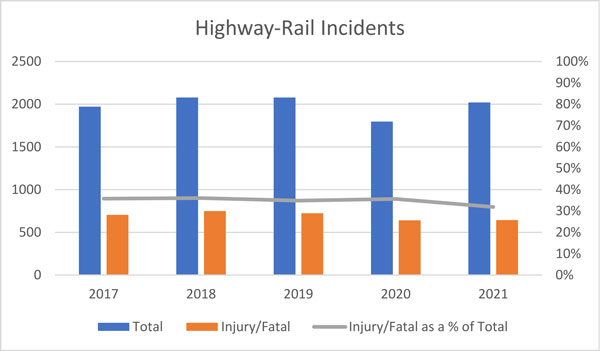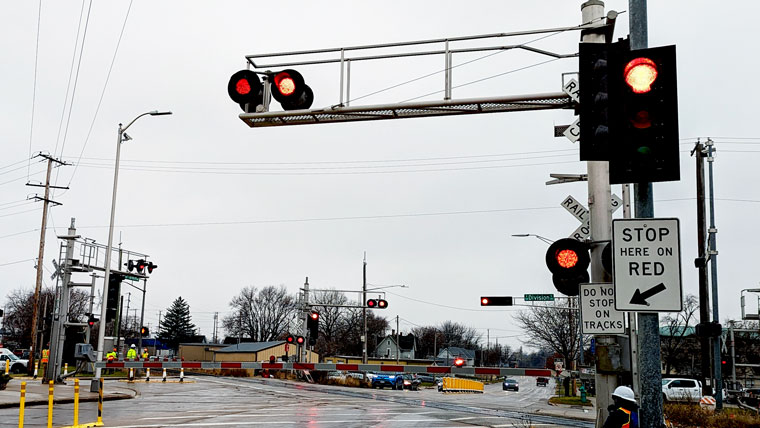Injuries and deaths occur at highway-rail grade crossings every day. In 2021, more than 2,000 collisions occurred at highway-rail grade crossings, according to the U.S. Department of Transportation Federal Roadway Administration’s (FRA’s) Highway-Rail Grade Crossing Incident data. Of these incidents, 32% resulted in injury or death.
This issue is not new. On October 25, 1995, a catastrophic train-school bus crash shook the town of Fox River Grove, Illinois. Furthermore, the FRA conducted a joint study with the Texas Department of Transportation (TXDOT), which showed that 17% of all highway-rail grade crossing incidents in Texas between 2003 and 2007 occurred at crossings that were interconnected with nearby traffic signals.
What makes traffic signal crossings dangerous?
For many agencies, it becomes difficult to maintain a confident understanding of these complex preempted systems and the necessary steps for a joint preemption inspection when they have only one or two traffic signals that are interconnected with highway-rail grade crossing warning systems. As a result, many agencies find themselves operating these complex preemption systems in a set-and-forget mode. This is a dangerous proposition since changes as simple as controller swaps and updating minimum green, yellow, all red or flashing “don’t walk” times can have potentially fatal consequences if not evaluated against the original design and current operation of the preemption system.

How can joint annual inspections make crossings safer?
One important strategy for curbing this trend is for agencies with traffic signals interconnected to adjacent highway-rail grade crossings to conduct an annual joint inspection of the highway-rail grade crossing warning system with the railroad. By holding annual joint inspections, agencies can review any changes that were made at the intersection, at the crossing, or within the traffic signal cabinet and controller with the operating railroad, and run tests to see that the interconnected system continues to operate as intended/designed.
We have seen this solution formalized through official FRA guidance. On July 25, 2012, the FRA issued Technical Bulletin S-12-01, Guidance Regarding the Appropriate Process for the Inspection of Highway-Rail Grade Crossing Warning System Pre-emption Interconnections with Highway Traffic Signals. In this technical bulletin, FRA covered, among other topics, the need for routine joint highway-rail grade crossing warning system inspections involving both the railroad and the traffic signal and roadway authority.
These joint inspections are becoming increasingly common in state-specific guidelines as well. In Wisconsin, the Office of the Commissioner of Railroads (OCR) is actively working to issue orders for annual joint inspections at all rail-grade crossings with preempted traffic signals, and the Wisconsin Department of Transportation’s Rails and Harbors Section has made these inspections an annual priority for the agency.
Moving forward, we hope to see more agencies and states incorporate this important step into their traffic safety practices. Joint annual inspections at highway-rail grade crossings are vital to protecting the traveling public.



